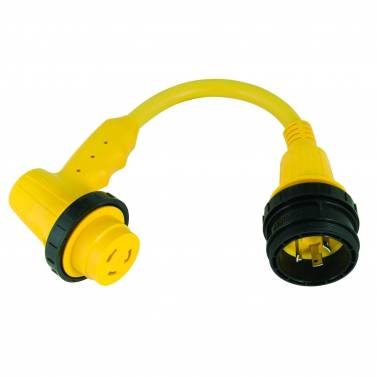twistedtree
Guru
No, the wires in the boat are not the weak link if the boat is wired properly. The L5-30 plugs are the weak link. The contact area is just too small and if you run much over 25 amps they tend to overheat and get worse as time goes by. The wiring in the boat has permanent connections so they don’t overheat if the wire is sized properly and has overcurrent protection. If the boat isn’t wired properly then all bets are off but that isn’t typically the case.
I'm curious who says the contacts are too small, other than Smart Plug? NEC and UL don't seem to think so. I don't doubt that the Smart Plug contacts are larger, but what's the basis for saying the NEC contacts are too small?
Now it may seem like I'm defending the 30A NMEA plug, and I'm not really trying to. I think it sucks, but more because it doesn't secure well enough for a marine application where constant movement can be expected. Those locking rings are a joke. I don't think I've ever been successful at getting two to mate together and do anything useful.
I'm just challenging the assertion that the contact area is "too small". Based on what?
And to Xsbank's point about the "Smart" in Smart Plug being a built-in thermal disconnect, didn't they eliminate that from the plug? So maybe now it should just be called the "Plug".
If we are going to hate the NMEA 30A plug, let's hate it for valid reasons.
To me, the only thing a Smart Plug brings to the table is a functioning coupling/retention mechanism between the plug and receptacle. And it only brings that for the 30A plug. I don't think the 50A version is any better than the Hubbell 50A plug.




